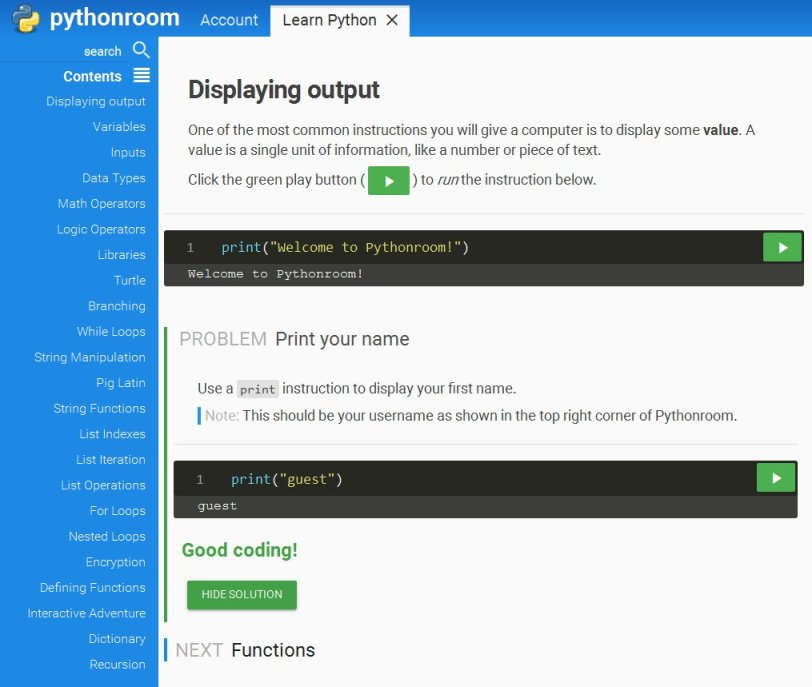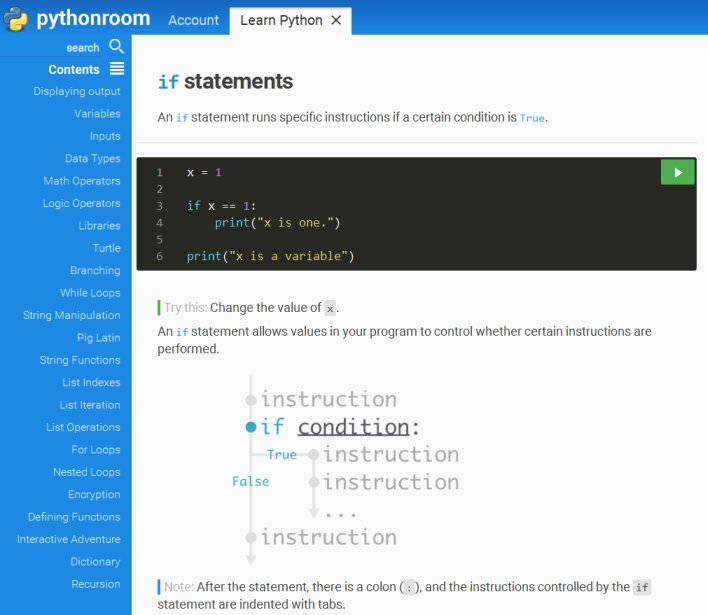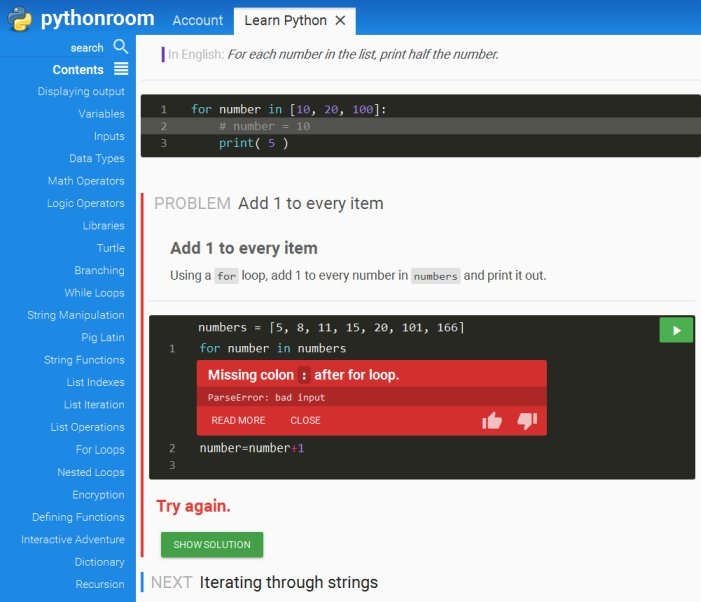| Pythonroom Brings Coding to the Classroom |
| Written by Nikos Vaggalis |
| Wednesday, 01 February 2017 |
|
Describing itself as a book, Pythonroom is available to all, whether in a classroom or not. Needing just a browser to run, and so suitable for a multitude of desktops and mobile devices, it provides an ideal jump start for kids to start learning coding.
The availability of step-by-step lessons is one reason for choosing Pythonroom as a starting point in learning to code. The other reason for jumping on the Pythoonroom bandwagon is Python itself. The language's clean, readable and English-sounding syntax makes it easy for someone not familiar with coding to get started.That aside,Python is also a fully featured, general purpose programming language with which you can do just about anything: Mathematics, Data science, Statistics, Automation, Natural language processing, Artificial intelligence, you name it. The platform is built with a curriculum centered on the student, as such it makes it super easy to get started with tasks that require just one, or two lines of code but incrementally progresses into more in depth exercises, to the point of coding graphics and making simple games. Explaining its approach the course creators say: "We have refined this curriculum over many years, so we are confident that Pythonroom is the most effective way to introduce computer science to young students."
The layout is clean and intuitive to work with and a sample of the easy flow that characterizes the exercises to begin with, is immediately met on the very first "Displaying Output" lesson where kids have to use the print function :
That's the way it's going to be; little fuss and no deep theoretic analysis, you just follow the instruction and do it. That is further evident with the shallow explanation of functions: In Python, each line is a separate instruction. print("Today I am learning how to code!") print("Coding teaches you how to think!") The keyword print is the name of a function, an action that a computer knows how to perform. A function call is an instruction that tells the computer to perform a function. Function call: function(value) That's as far as it will go explaining things.You then just have to follow along and: "Print the names of your favourite author, artist, and historical figure on separate lines."
Here's another example taken from the concept of the variables: A variable stores information in a computer's memory. This information can be accessed anywhere in the program. In this program, the variable a stores the text "Welcome to Pythonroom!". a = "Welcome to Pythonroom!" print(a) Now, create the following three variables then print out the information they store: name: stores your full name We have to accept that as: "the curriculum is developed by programming instructors that have taught coding to thousands of students and educators" they know what they're talking about.
All in all there are more than one hundred lessons to take, even in a non-linear fashion, for example you can freely jump from Variables to For Loops, or from there to Encryption, although the linear way is the one recommended. Another strong point of the platform is the immediate feedback and the helpful error messages that actually make sense, things extremely necessary for the first timer.
Pythonroom comes in two packages, a free edition and another, targeted at the classroom, for $35 per month. What's the difference? The latter edition has the useful additions of:
The analytics feature alone, used in projects like BlueJ makes the $35 for an institution a sum worth spending. Either way, whether you run a class or are just a parent wanting to teach your kids how to code, Pythonroom offers the most suitable, class A proposition.
More InformationRelated ArticlesBlueJ-Exposing The Most Frequent Mistakes In Programming To be informed about new articles on I Programmer, sign up for our weekly newsletter, subscribe to the RSS feed and follow us on Twitter, Facebook or Linkedin.
Comments
or email your comment to: comments@i-programmer.info
|
| Last Updated ( Wednesday, 01 February 2017 ) |







